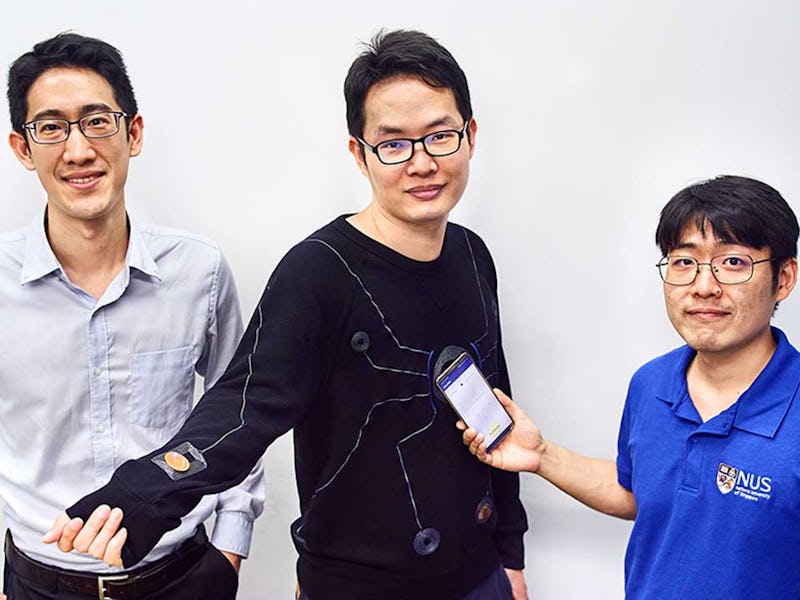Tech
Researchers have made a smart suit that can track vitals in real-time
Athletes are constantly looking for that slight edge, and this might be it.

Athletes are always looking for something to give them that slight edge over the competition and new technology has been able to help them track and monitor their performance with unprecedented granularity. But wearables like the Apple Watch and Fitbit are worn on the wrist and limited to tracking information like heart rate and blood oxygen levels — and not always with the best accuracy.
Other data may also be useful for improving performance, such as posture readings and running gait. But to take things even further, researchers at the National University of Singapore have created a full-body smart suit that can track that information and record it wirelessly via a smartphone for accurate real-time monitoring.
Smartphone-powered circuitry — This type of outfit might be bulky, which could interfere with performance and defeat the purpose. But the team kept the weight down to a minimum by sewing a web of threads into the suit that can relay electromagnetic signals wirelessly from a nearby smartphone to provide power. That means there are no onboard batteries or wiring.
Because the suit doesn't require a tangle of wires like other similar systems, it can be used in an outdoor environment under more typical circumstances. Just use an armband to strap your phone to your leg or wrist and you're good to go.
Leg up — At each of several areas along the threading, small sensors have been sown in that transmit data over NFC. Right now the sensors can measure spinal posture, running gait, and body temperature simultaneously. This type of information could help an athlete hone in on their areas of improvement to boost performance. Data provided by wearables like the Apple Watch isn't totally reliable on its own — its blood oxygen sensor takes readings through the wrist, for example, whereas medical professionals say the best readings come from measurements taken through the fingertip.
For serious athletes, this type of full-body suit may prove useful, even if it's not especially stylish — maybe the academics can bring someone else in to help with that part.